Learn a new Ukulele chord every day of the year. The chord for February 22nd is F#m7b5.
Today's chord, F#m7b5 is the first chord, if using a Low G, C Tuning, where all the notes are within one octave – a Close Position chord. When using a High G
' C Tuning, all the notes are in a close position, within one octave. It's often misnamed as a D9.
Today's chord might also be called D9 and/or — the list can go on and on with more and more obscure chords. It all depends on the harmonic situation and the chord's harmonic function that it is being used in that determines the name of the chord. A bass player can change the function of a chord with the bass note they play, as that can be perceived as the root or letter name of the chord. Bass players have extreme harmonic powers, and they can use it for good or evil.
What's really useful is you don't have to learn a new fingering or voicing for other same shape chords when they come up. If you recognize the chord as another chord that is common in your repertoire, you can re-use it in the current context.
Here is a cool, fun exercise: *7alt —alt
, short for alteration. This is telling you that you are free to create the seventh chord with any upper partial extension ( 9th, 11th, 13th) and any alteration(s) that you would like: ♭9, ♯9, ♯11, ♭5, ♯5, ♭13. An example would be C7alt, the base C7 is C E G Bb – the 1 3 5 ♭7. You're free to add D♭, D♯, F♯, G♭, G♯, A♭. So your possible notes available are: C D♭ D D♯ E F F♯ G♭ G G♯ A♭ B♭. Notice B, the major seventh is NOT available. So, bottom-line is — if your chord does not contain a major seventh, you can justify every other note you are playing.
So when it comes to that dominant seventh chord or tri-tone sub resolving to what would be its I chord. And, if you don't know what to play, grab any shape and go for it. You have a 1 in 12 shot of hitting that major seventh, which would be really hard to justify a B7alt — B is the major seventh.
Including the 3rd and b7 goes a long way in keeping the intent of the base 7th chord. So, you have tow more noes to muck around with — BUT NOT the major seventh. Walk over to any piano and play the two-white keys together, and you get the why.
4-part, a.k.a.
JazzChords
Jazzchords for creating your 4-part, contemporary chord foundation and
Life Beyond the Third Fret.
Movable Ukulele Chords Lesson Series page.

 Understanding a Chord Diagram
Understanding a Chord Diagram
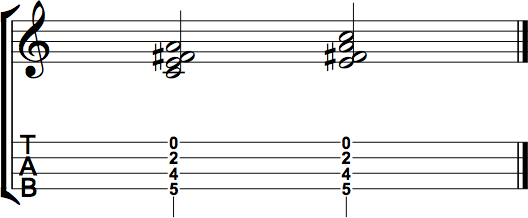
Gvariations
Additional Information
A F#m7b5 chord or generally a m7b5 or half-diminished seventh chord, as there names imply can function as a II minor chord in a minor key or as a VII diminished chord in a major key.
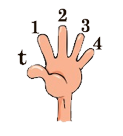 Although additional fingerings are possible for many chords, fingering for any given chord depends on the science of how our fingers work and on the harmonic context the chord is being used in—what was the previous chord, and what's the next chord? The goal is to play all the notes right behind the frets when possible. Remember, longer fingers can reach the lower strings better, and finger two can stack on finger three, and finger three can stack on finger four.
Although additional fingerings are possible for many chords, fingering for any given chord depends on the science of how our fingers work and on the harmonic context the chord is being used in—what was the previous chord, and what's the next chord? The goal is to play all the notes right behind the frets when possible. Remember, longer fingers can reach the lower strings better, and finger two can stack on finger three, and finger three can stack on finger four.- 4 3 2 0

half-diminished seventh
A half-diminished seventh chord is a diminished chord type. Also, called a minor seven flat five (m7b5). The proper name all depends on the harmonic function the chord is being used in. The most common usage is as a minor seven flat five (m7b5) in a II V minor context.
Related Lessons, Videos, Lesson Series, Songs, Books & Reference Charts, Resources & Assets, Workshops are below.
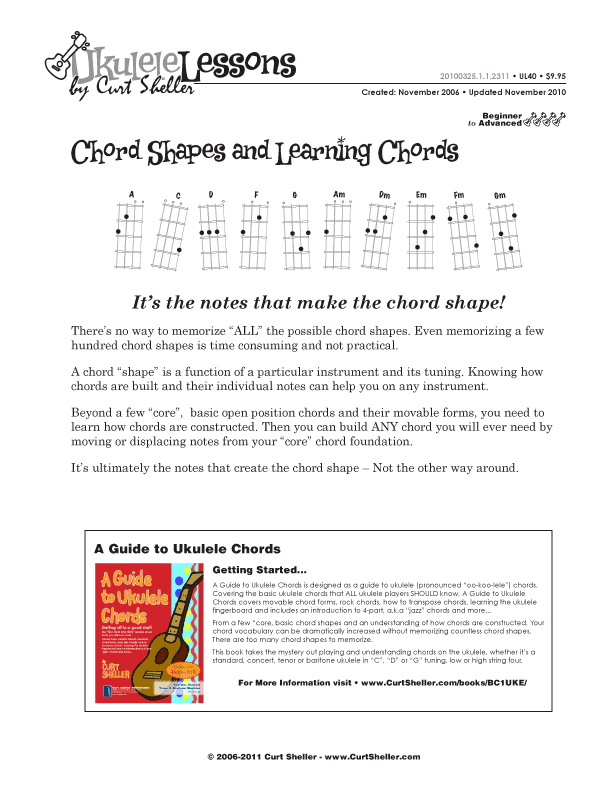
Pick up any chord dictionary, and one thought that should go through your mind is - TOO MANY CHORDS There is now way to memorize all those shapes. It would be better off learning how they came up with all those shapes. Most chord dictionaries are also just like pages transposed to all possible keys.
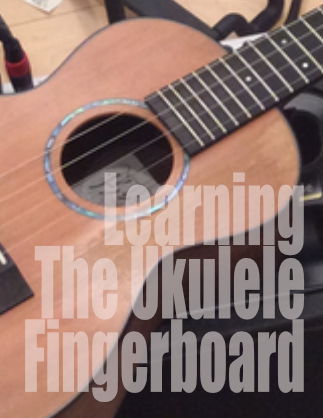
Most players struggle with learning the names of the notes of the ukulele fingerboard. There doesn't seem to a pattern and notes repeat. There is an easy way and "it's easier that you think." Most players know the names of the open strings for their favorite tuning.
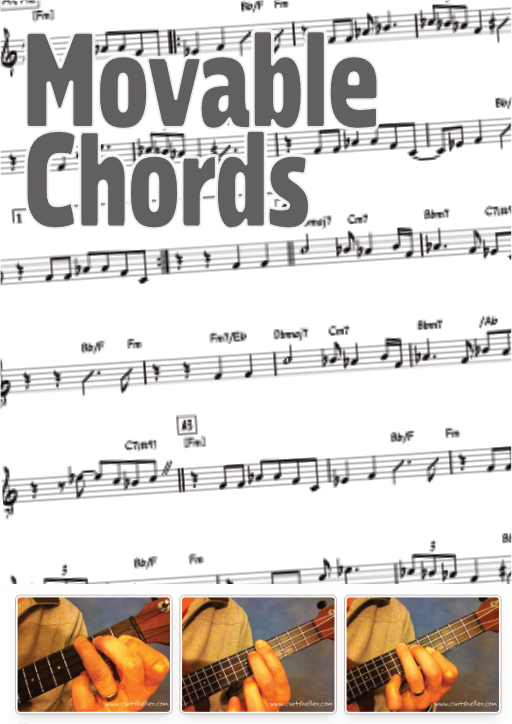
A series of weekly ukulele lessons originally presented throughout 2007 on movable ukulele chords as the "Ukulele Chord of The Week Series". Based on the Ukulele Chords book by Curt Sheller (me). It takes the open position chords and shows the movable form and the variations.
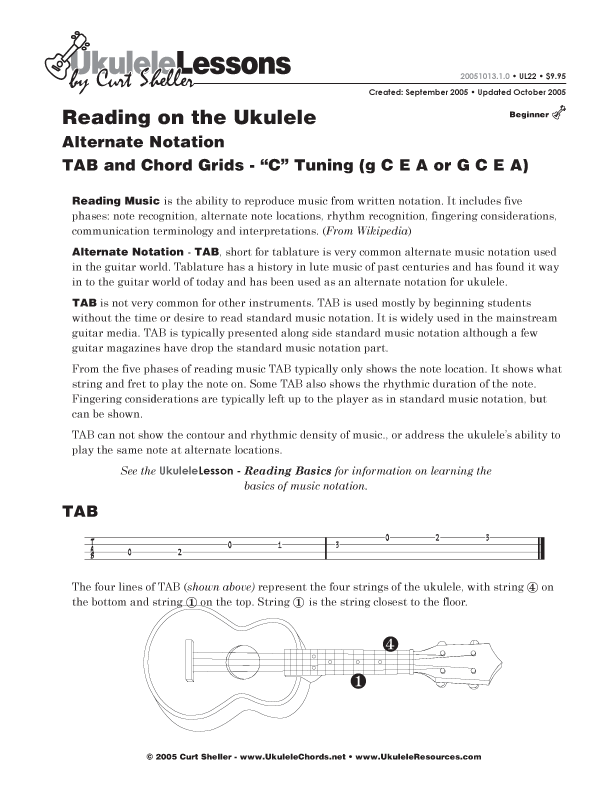
"TAB" or "Tablature", is an alternate form of musical notation, which tells players where to place their fingers on a particular instrument rather than which pitches to play. TAB is sort of a secret language between guitar players and ukulele players. Although a shortcut to getting started it actually serves to alienate one from the rest of the music world.
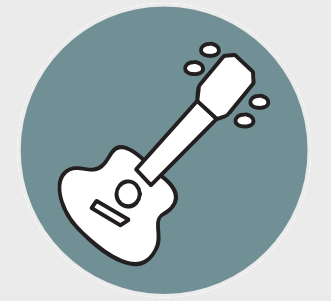
For music and learning an instrument like the ukulele or guitar, it's all about the making the connection between your Mind, your Hands, and your Ear. When listening to music, we enjoy it at the tempo the composer or artist intended, in real time. Only the ear is involved in listening. This is passive listening and you're simply enjoying the music. This is what we do every day and it's what draws us to want to learn a musical instrument.
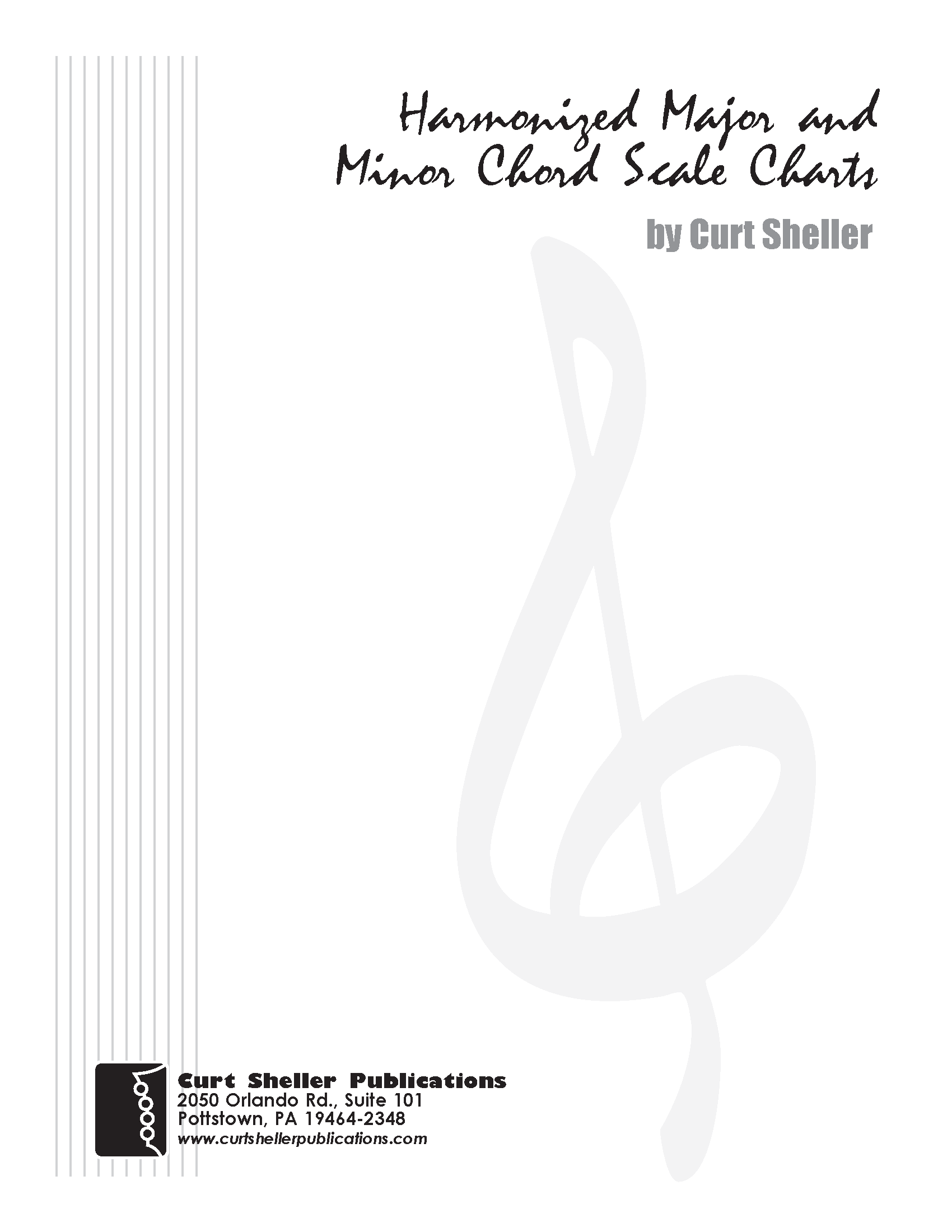
The "Major Scale" or Ionian scale is a diatonic scale, made up of seven distinct notes, plus an eighth which duplicates the first one octave higher. In solfege these notes correspond to the syllables Do, Re, Mi, Fa, Sol, La, Ti/Si, (Do), the Do in the parenthesis at the end being the octave of the root.
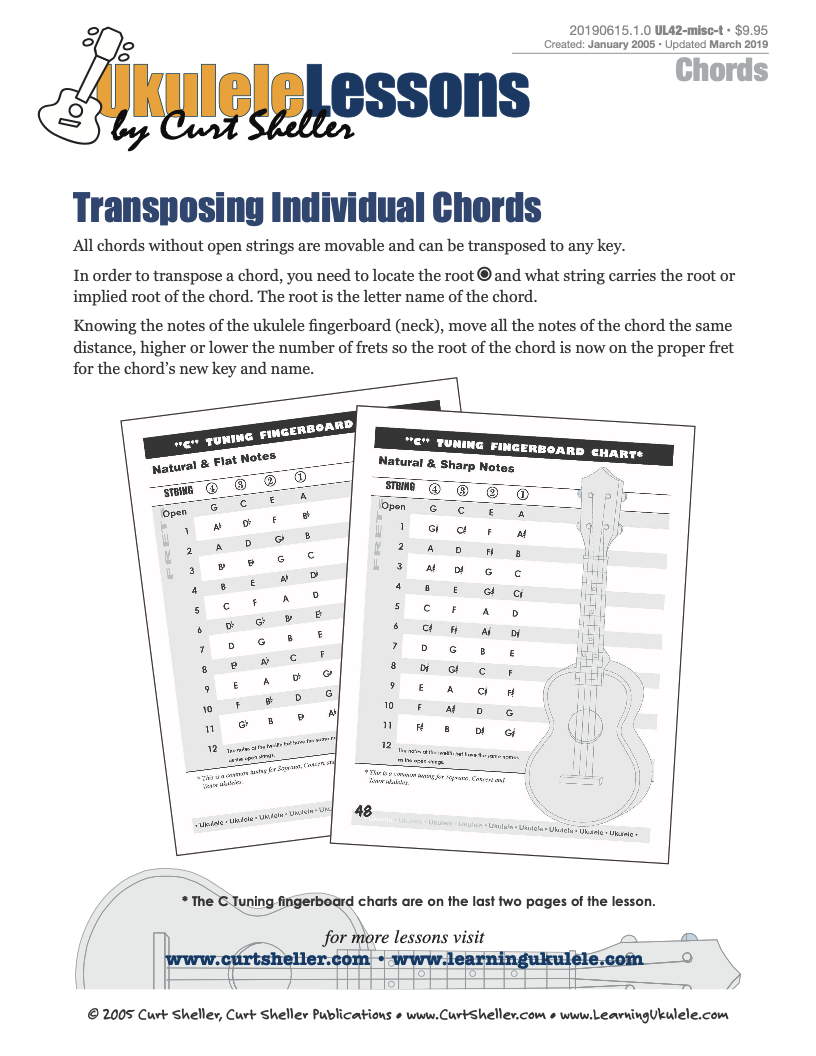
"Transposition" is the process of moving a note, chord, scale or any musical passage from one key to another key. All music can be transposed, from a single note to a complex musical score. This lesson deals with transposing chords on ukulele and transposing chords.

Core Chords for Ukulele, The Big Six - From four F7 chord voicings or shapes, your can build your massive 4-part, a.k.a., “jazz” chord vocabulary. Beyond basic open position chords, basic movable form chords and a core set of 4-part chords. There are just too many chords shapes too memorize.
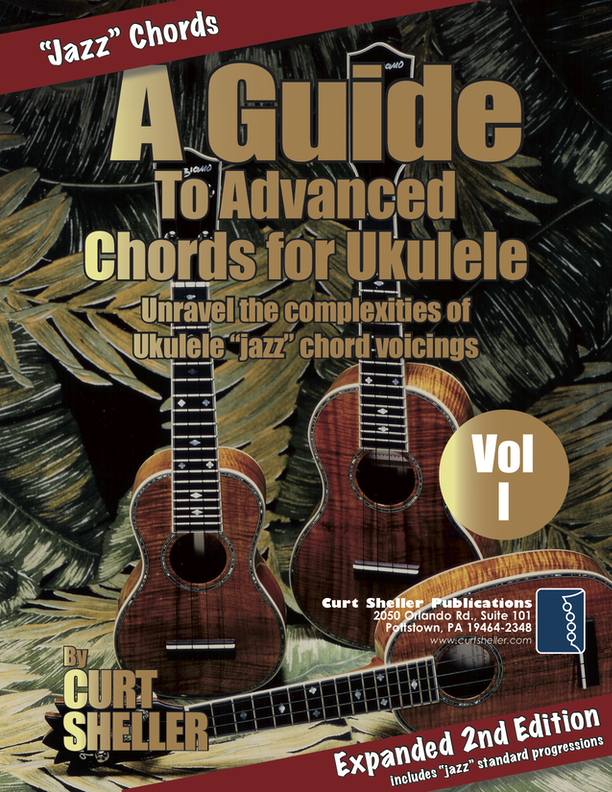
Beyond learning basic Ukulele chords, most players struggle with advanced chords. Commonly called "jazz" chords, these more sophisticated voicings find a wide use in all forms of music. A Guide to Advanced Chords for Ukulele - presents a highly organized and efficient approach to the mysterious subject of advanced chords. Chord dictionaries are not the answer.
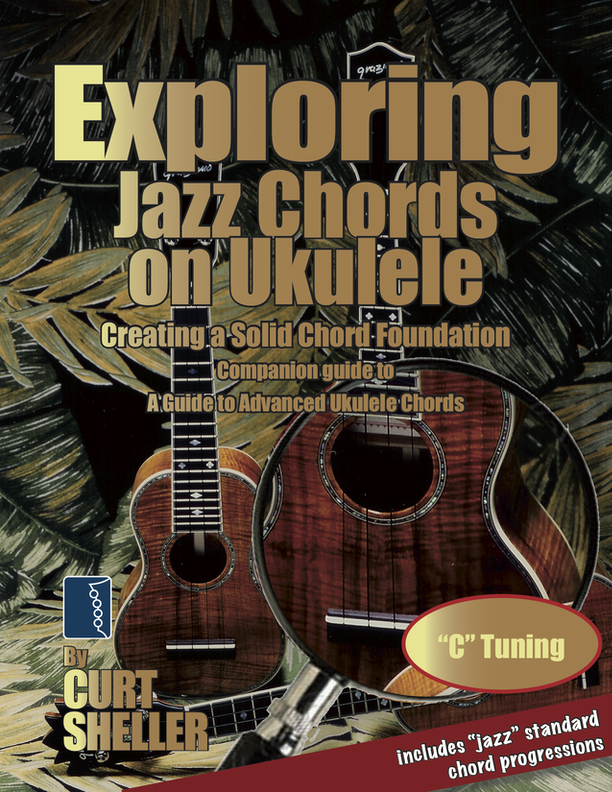
Exploring jazz chords using a variety of common chord progressions based on songs from the standard jazz repertoire. Core Chords are the basic set of chords needed to play a wide range of music, in a variety of styles. This set of chords includes basic open position chords, basic movable form chords and the core 4-part "jazz" chords.
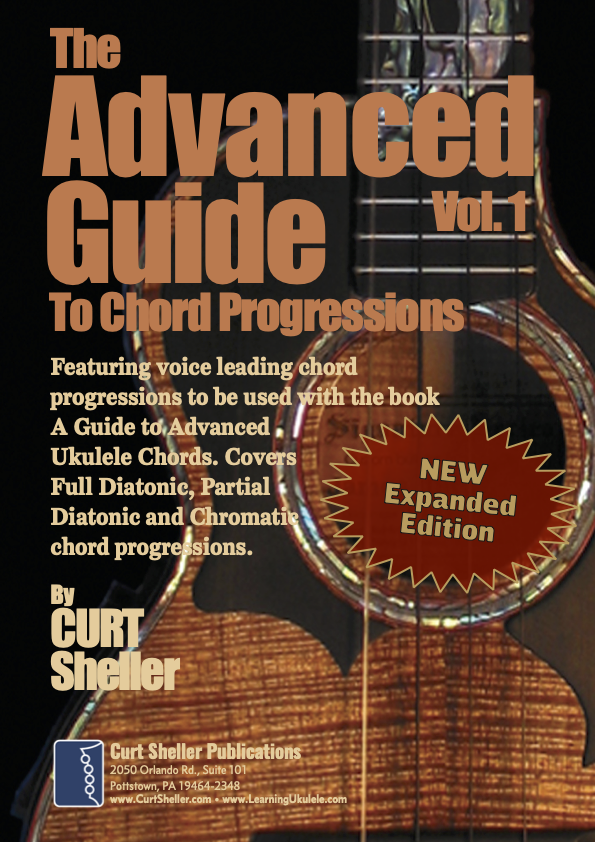
Before individual chords become the background of songs, they must be put into orders called chord progressions. The Advanced Guide to Chord Progressions for Ukulele organizes progressions according to string family, position, voice leading and chord magnetism.
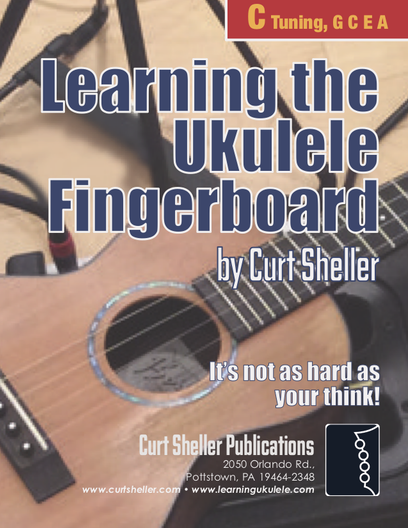
Finally, learn the names of the notes of the ukulele fingerboard in C tuning .

Learn the six fingering principles to navigating the ukulele fingerboard. Fingering is one of the most universal topics. Book: Six Secrets of the Ukulele Fingering
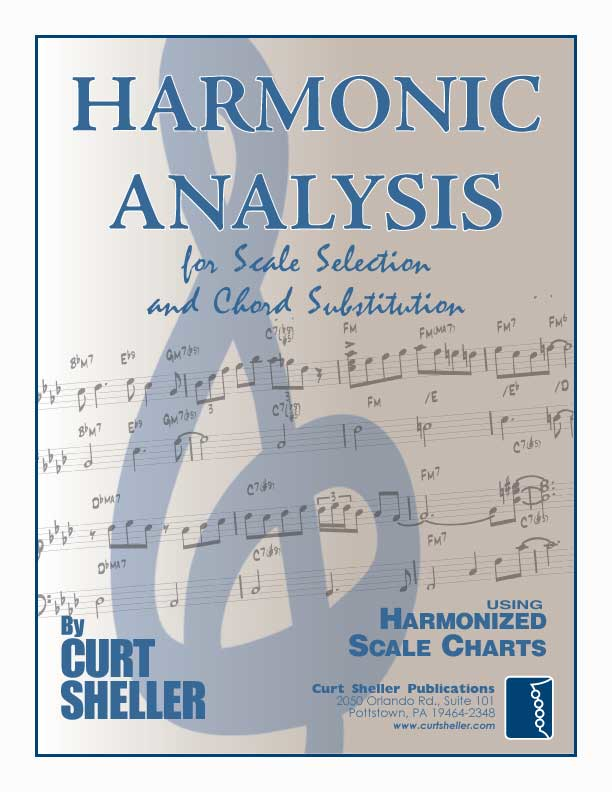
Harmonic Analysis is the understanding of the functional sequence of chords. It is the process used to analyze the harmonic structure of a progression, song or composition. Book: Harmonic Analysis for Scale Selection and Chord Substitution
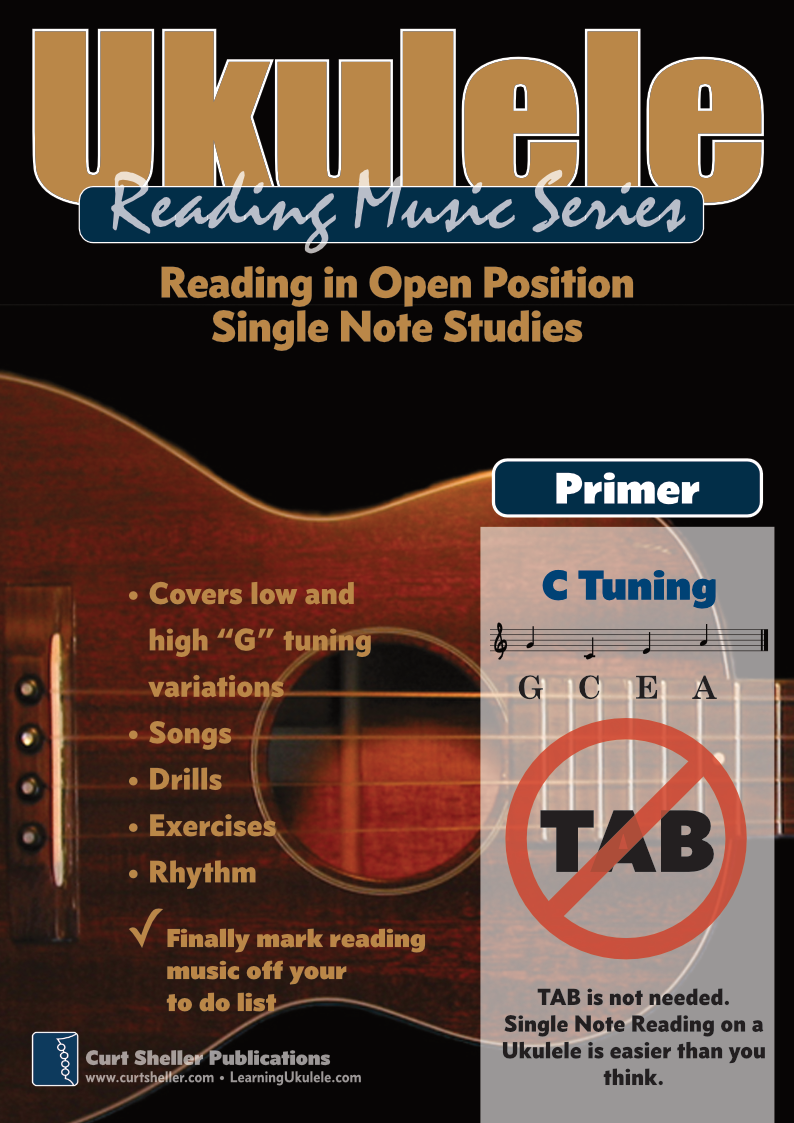
Learn to read single note melodies in the first/open position is a lot easier than you might think. Book: Ukulele – Reading Music Series – Primer
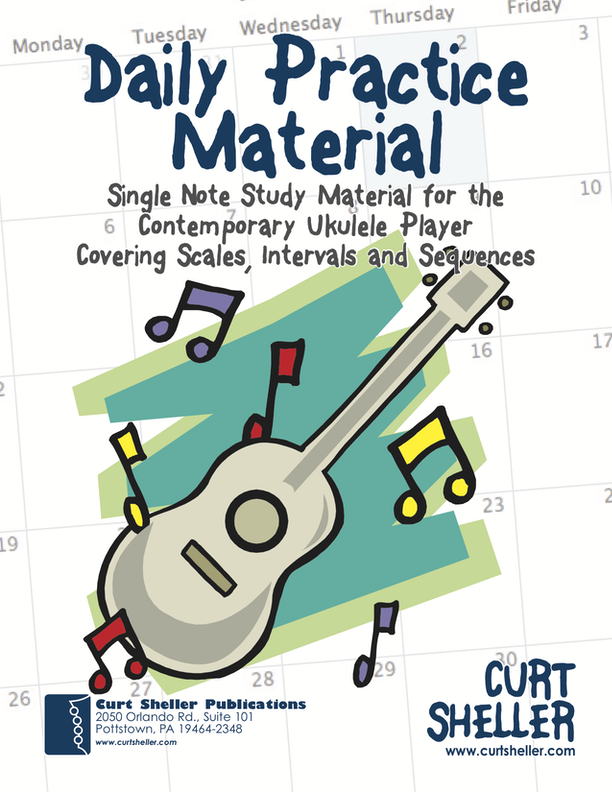
An organized collection of daily practice and reference material for the contemporary ukulele player for developing the vocabulary and knowledge necessary for single note playing. Book: Daily Practice Material for the Contemporary Ukulele
Checkout the Books & Reference Charts for additional Handy, Dandy Reference Charts.
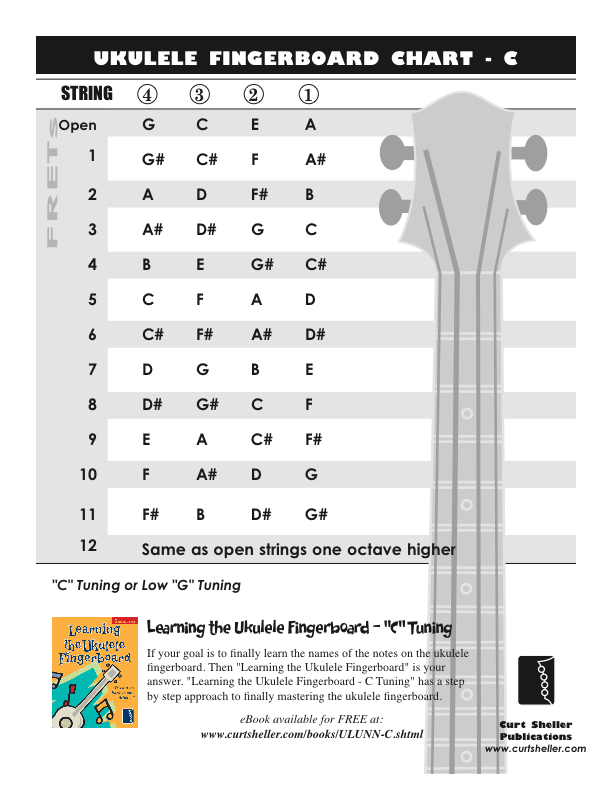
Ukulele Fingerboard Chart for C Tuning, Low or High G – G C E A
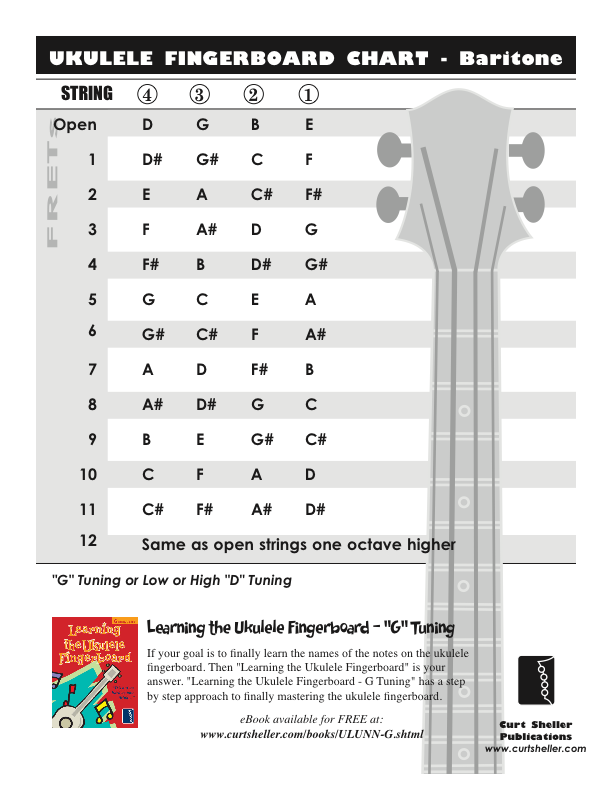
Ukulele Fingerboard Chart for G Tuning, Low or High A – D G B E
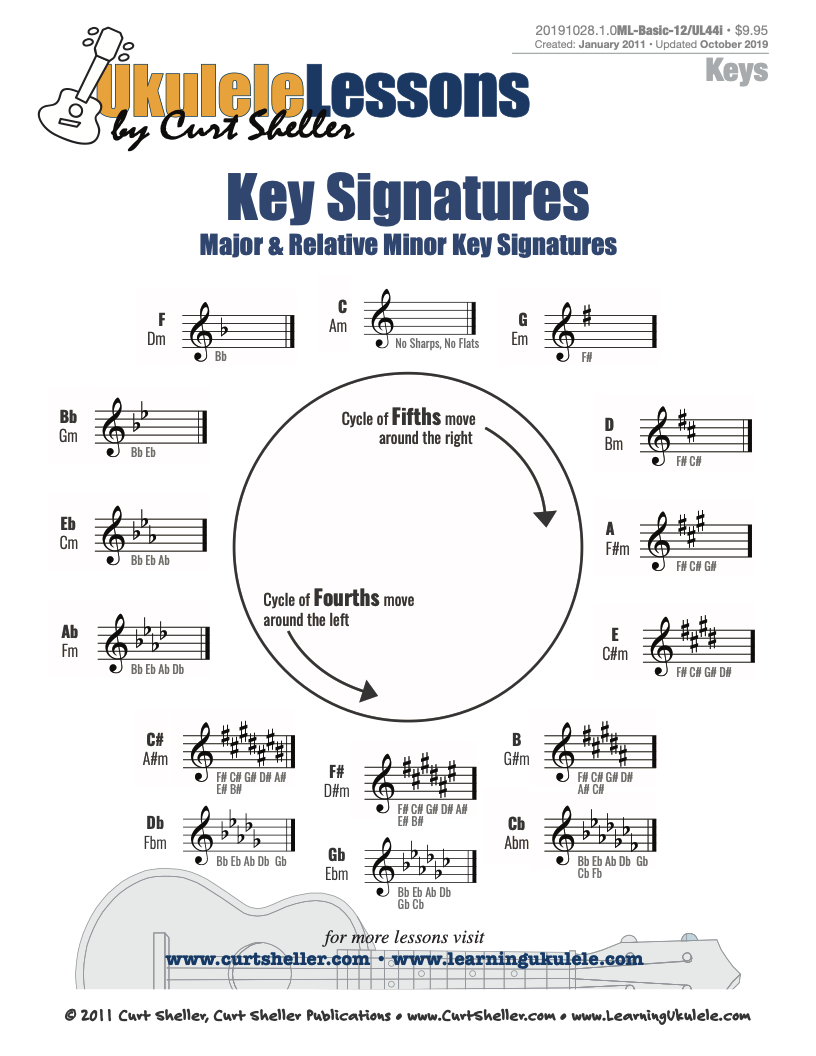
A handy reference chart of all 15 major and relative minor key signatures. US Letter 8.5 x 11 sized (ANSI-A), A4
Checkout the Books & Reference Charts for additional Handy, Dandy Reference Charts.


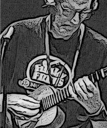
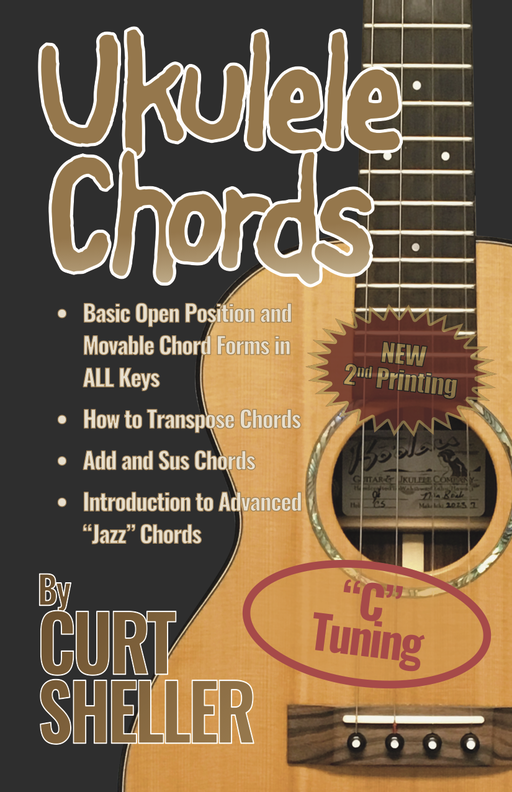
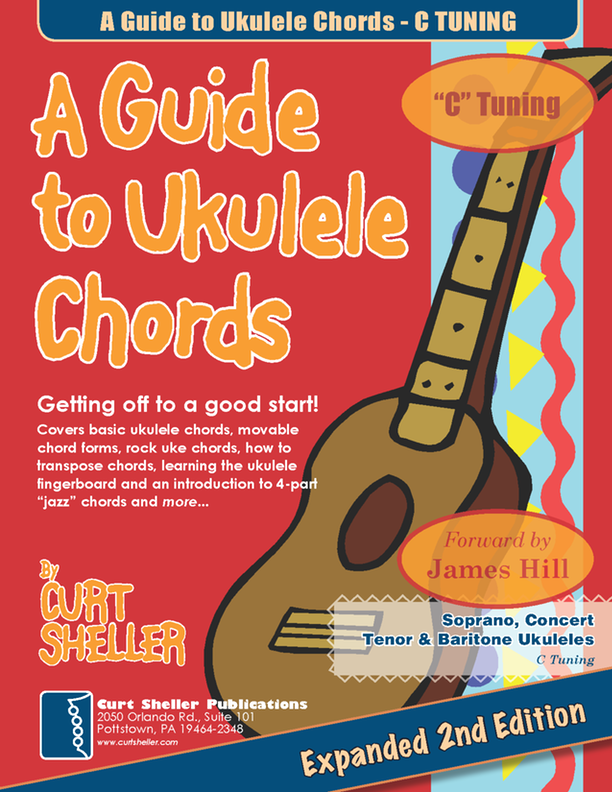
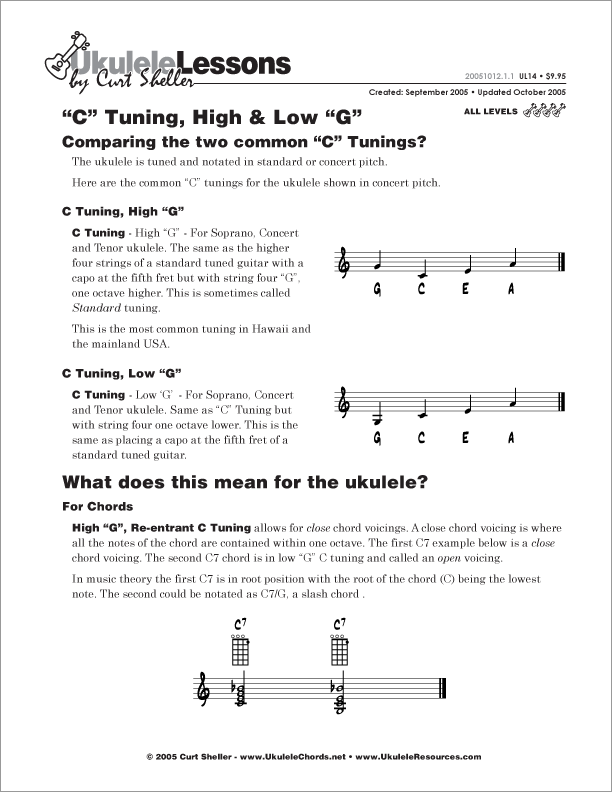
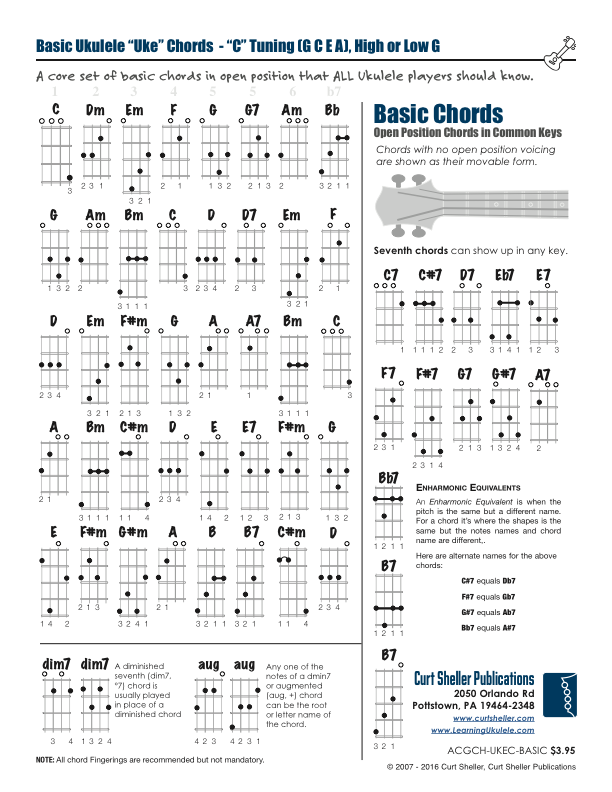
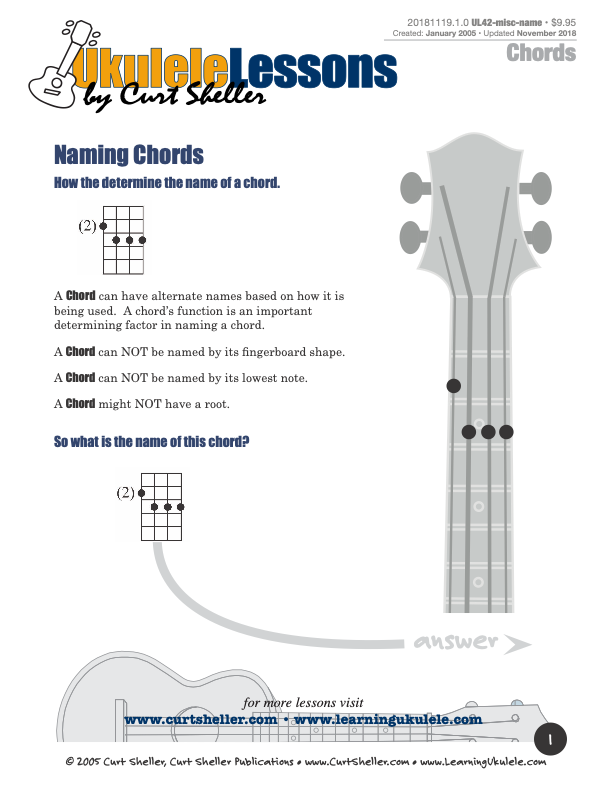
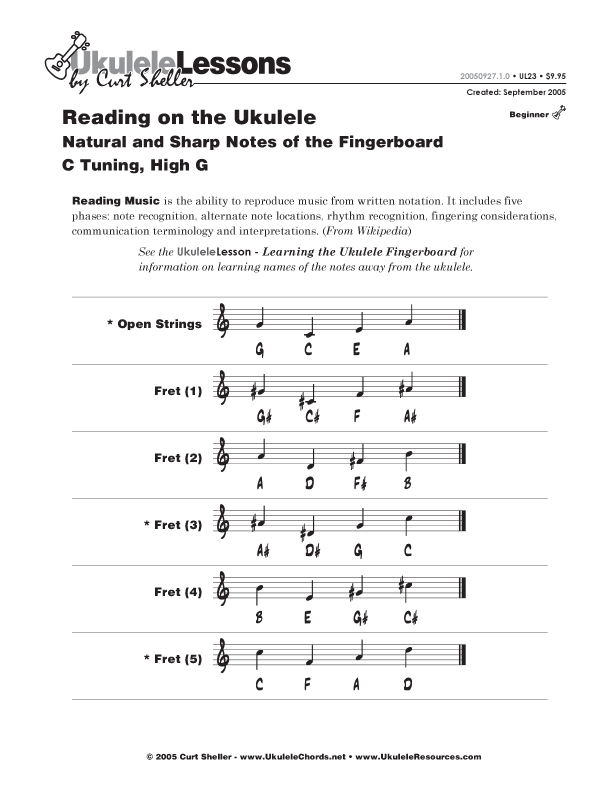
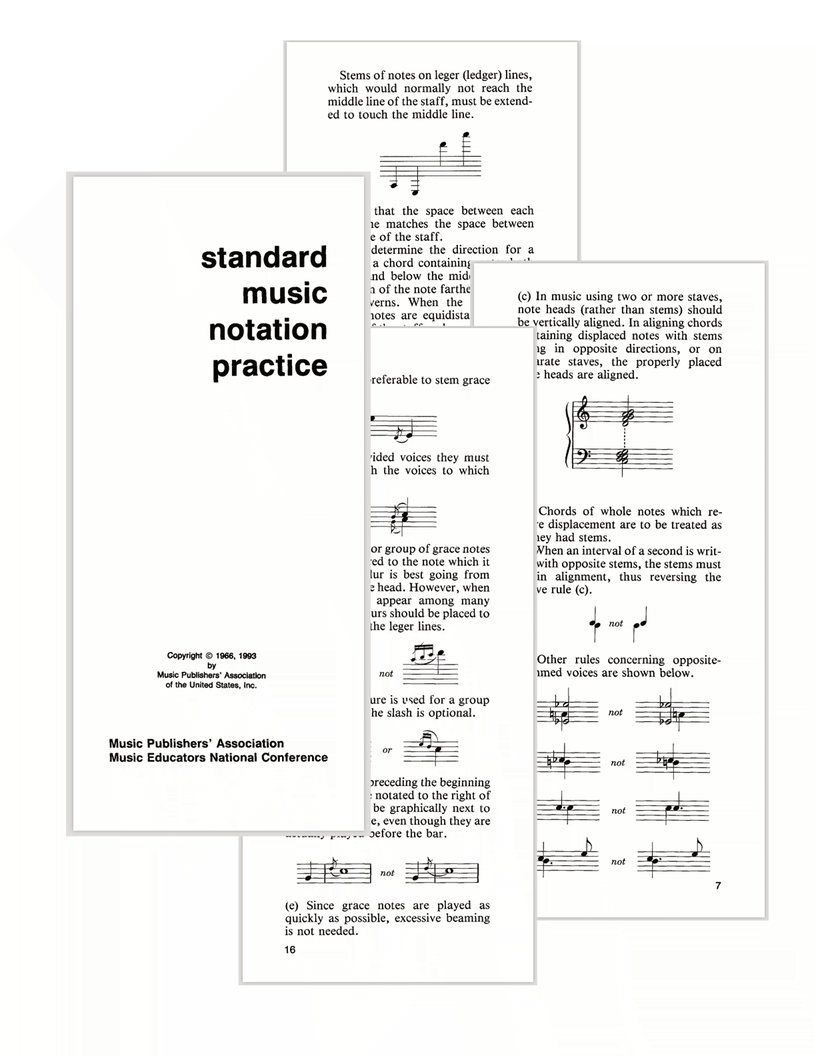

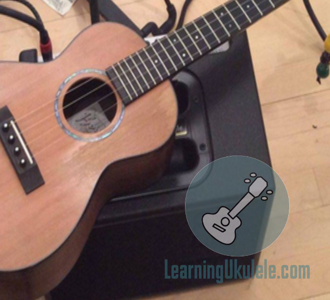
.jpg)